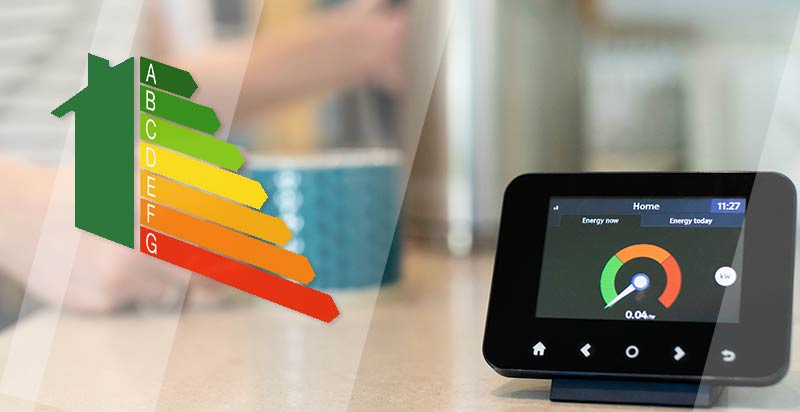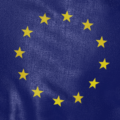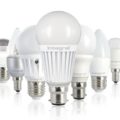The European Union (EU) has recently made significant changes to its energy labels regulation, which will impact the way energy efficiency is measured and communicated to consumers. These changes aim to make energy labels more accurate, informative, and user-friendly, in order to help consumers make more informed decisions about their energy consumption.
In this article, we will explore the changes to the EU energy labels regulation and how they will affect consumers, manufacturers, and retailers.
What is the EU Energy Labels Regulation?
The EU energy labels regulation was first introduced in 1992 and has been revised several times since then. Its purpose is to provide consumers with information about the energy efficiency of household appliances and other products, such as light bulbs and televisions.
The new labels use a scale from A to G, with A being the most energy-efficient and G being the least. This allows consumers to easily compare the energy efficiency of different products and make more environmentally-friendly choices.
Why Were Changes Needed?
Over the years, the EU energy labels regulation has become outdated and confusing for consumers. Many products now fall into the highest energy efficiency categories, making it difficult for consumers to differentiate between them.
Additionally, advancements in technology have made it possible for products to achieve higher energy efficiency ratings, making the current scale less effective in differentiating between products.
Running in parallel with the prohibiting of older inefficient products, the EU recognised the need for a more accurate and informative energy labeling system and has made changes to address these issues.
What Are the Changes?
The most significant change to the EU energy labels regulation is the introduction of a new scale from A to G, with A being the most energy-efficient and G being the least. This new scale will replace the current A++ to E scale, which has become outdated and confusing for consumers.
New Labels for Existing Products
All existing products on the market will need to be re-labeled with the new scale by March 2021. This means that consumers may see both the old and new labels on products during the transition period.
New Labels for New Products
From March 1st 2023, all new products entering the market will be required to have the new energy labels. This will ensure that consumers are only presented with the new, more accurate and informative labels.
Additional Information on EU Energy Labels
The new labels will also include additional information, such as the product’s energy consumption in kilowatt-hours (kWh) per year, as well as the noise level of the product. This will help consumers make more informed decisions about their purchases.
How Will These Changes Affect Consumers?
The changes to the EU energy labels regulation will have a positive impact on consumers. The new labels will be more accurate and informative, making it easier for consumers to compare products and make more environmentally-friendly choices.
Additionally, the new labels will also include information on the product’s energy consumption, allowing consumers to estimate their energy costs and make more cost-effective decisions.
How Will These Changes Affect Manufacturers and Retailers?
Manufacturers and retailers will also be affected by the changes to the EU energy labels regulation. They will need to ensure that all existing products are re-labeled with the new scale by March 2021 and that all new products entering the market have the new labels.
This may require manufacturers to make changes to their products in order to achieve higher energy efficiency ratings. Retailers will also need to update their systems and processes to accommodate the new labels.
What About Green Certification?
Green certification, such as the EU Ecolabel, will still be available for products that meet certain environmental standards. However, these labels will now use the same A to G scale as the energy labels, making it easier for consumers to compare products.
What Are the Benefits of the Changes?
The changes to the EU energy labels regulation have several benefits for consumers, manufacturers, and retailers.
More Accurate and Informative Labels
The new labels will provide consumers with more accurate and informative information about the energy efficiency of products. This will help them make more environmentally-friendly and cost-effective choices.
Encouraging Manufacturers to Improve Energy Efficiency
The new labels will also encourage manufacturers to improve the energy efficiency of their products in order to achieve higher ratings. This will ultimately lead to a reduction in energy consumption and a more sustainable future. Here at SimplyLED, we are already seeing the benefits of this, with new ultra-efficient LED light bulbs beginning to hit the market.
Streamlining the Labeling Process
The new labels will use the same scale as green certification labels, making it easier for manufacturers and retailers to label their products. This will streamline the labeling process and reduce confusion for consumers.
What Can Consumers Do?
As a consumer, there are several things you can do to make the most of the changes to the EU energy labels regulation.
Look for the New EU Energy Labels
From March 2021, all new products will have the new energy labels. Look for these labels when making purchases to ensure you are getting the most accurate and informative information about the product’s energy efficiency.
Compare Products
The new labels will make it easier to compare products and make more environmentally-friendly choices. Take the time to compare products and choose the most energy-efficient option.
Consider Energy Consumption
The new labels will include information on the product’s energy consumption in kWh per year. Consider this information when making purchases to estimate your energy costs and make more cost-effective decisions.
The changes to the EU energy labels regulation are a step towards a more accurate, informative, and user-friendly labeling system. These changes will benefit consumers, manufacturers, and retailers, and ultimately lead to a more sustainable future.
As a consumer, it is important to be aware of these changes and use the new labels to make more informed decisions about your energy consumption. By doing so, you can play a part in reducing energy consumption and protecting the environment.




